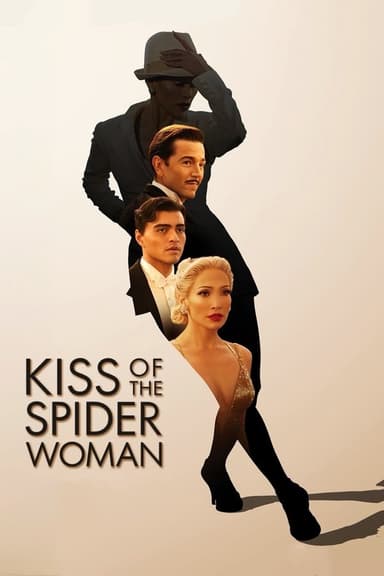
Kiss of the Spider Woman
1985 • Drama • R
The story of two radically different men thrown together in a Latin American prison cell. One is Valentin, a journalist being tortured for his political beliefs. The other is Molina, a gay window-dresser who fills their lonely nights by spinning romantic fantasies drawn from memories of old movies.
Runtime: 2h
Why you should read the novel
Reading Manuel Puig’s Kiss of the Spider Woman offers a nuanced and immersive literary experience that goes far beyond what a two-hour film can provide. Puig’s innovative use of dialogue, footnotes, and shifting narrative perspective creates an intimacy with the characters that allows readers to delve into their innermost thoughts, fears, and desires. The interplay between fantasy and reality is much richer in the novel, allowing readers to see how the power of storytelling helps both protagonists endure their imprisonment and build an unlikely bond.
The original novel provides rich sociopolitical context that sheds light on the oppressive environment of 1970s Argentina. Through detailed characterizations and the inclusion of footnotes on sexuality, Puig opens discussions about political activism and queer identity in a manner that is both subtle and deeply affecting. Readers have the opportunity to engage with these complex themes at their own pace, making for a more personal and contemplative journey than what a cinematic adaptation can usually supply.
Furthermore, choosing to read the book allows you to appreciate Puig’s experimental writing style, which breaks conventional narrative forms and invites active participation. The sparseness of stage direction and lack of explicit physical description push the imagination, creating a deeply personal vision of the story and its characters. By reading the novel, you’ll uncover layers and nuances of meaning left out of the adaptation, gaining a fuller understanding of the transformative power of love and fantasy.
Adaptation differences
One of the main differences between the 1985 film adaptation and Manuel Puig’s novel is the narrative style. The film translates the story into a linear visual narrative, focusing primarily on the evolving relationship between Molina and Valentin. In contrast, the novel employs an experimental format, using dialogue with minimal attributions, detailed psychological footnotes, and abrupt shifts between fantasy sequences and reality. This literary structure draws the reader into the characters’ inner worlds in a way that is more abstract and multifaceted than the more straightforward approach of the movie.
Another significant difference lies in the depiction of the prison environment and the characters’ backgrounds. The novel provides readers with a deeper sense of the oppressive political climate of Argentina and the nature of Valentin’s revolutionary work. Footnotes discussing sexuality, psychology, and even the nature of storytelling add further context and rich subtext. The movie, while maintaining the overall themes, often simplifies these elements to streamline the narrative for cinematic purposes, sometimes at the expense of the source material’s depth and ambiguity.
The movie also trims down or alters certain film-within-the-film sequences from the book. In Puig’s novel, Molina narrates a series of films to Valentin, which serve as a way to escape, reflect, and draw parallels with their real situation. These narratives in the book are more detailed and stylistically distinct, helping to blur the lines between fantasy and reality. The film, for reasons of pacing and clarity, adapts fewer of these stories and presents them in a more stylized, less fragmented manner, which changes the impact they have on the characters and viewer alike.
Finally, characterizations and relationships are subtly but meaningfully different. Molina’s sexuality and self-perception are explored with great psychological depth in the novel, aided by Puig's inventive use of interior monologue and meta-textual commentary. The film, while powerful in its performances, must externalize these aspects, sometimes leading to simplification or reinterpretation. As a result, some of the novel’s subtleties regarding gender, identity, and political commitment are diminished or transformed when translated to the screen.
Kiss of the Spider Woman inspired from
Kiss of the Spider Woman
by Manuel Puig










